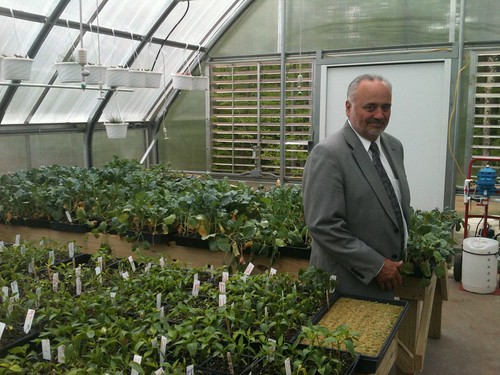
West Virginia and Appalachian Ohio have a lot in common beyond their shared state border. With a strong agricultural heritage, these vast rural areas are known for their forest and timber industries, and they are integrating food systems into local economic development.
Earlier this month, I joined Appalachian Regional Commission (ARC) Co-Chair Earl Gohl and Ohio’s State Rural Development Director Tony Logan to take a look at local food in the Buckeye state. My colleague, Deputy Under Secretary for Marketing and Regulatory Programs Joani Walsh, recently made a similar trip to West Virginia. Organized by ARC, the visits were an opportunity to discuss how local food is diversifying the economy, developing a more competitive workforce and generating opportunities within regions like Appalachia. “Through our work on the Know Your Farmer, Know Your Food Initiative, we know that there are lots of ways that local foods are providing economic opportunities in rural communities,” said Walsh. “These visits with ARC gave us a clearer picture of how that is happening in Appalachia.”
We made several stops in Ohio, including visiting the recently opened Nelsonville Business Center. The center is part of the Appalachian Center for Economic Networks (ACEnet), an organization focused on building networks, supporting innovation, and promoting collaboration within Appalachian Ohio’s businesses community. Over the next nine years, the Nelsonville Center plans to help grow and develop 40 locally-owned businesses, many of them food focused. This is in addition to the scores of local businesses that ACEnet’s Athens location has already nurtured from startup to full-scale success.
We also met with the Foundation for Appalachian Ohio (FAO) to discuss how the foundation and its partners are using philanthropy to create sustainable communities and promote economic development across the region. FAO recently received a USDA Rural Community Development Initiative grant to help other community foundations foster local economic growth. What I saw at ACEnet, FAO and throughout our trip was proof that small investments can have a huge impact on local economies, especially when the entrepreneurial spirit is channeled in local food development. I even had time to participate in a community event bringing broadband to the rural town of Stafford, Ohio.
Just weeks before, Deputy Under Secretary Walsh had a similar experience during her tour of West Virginia with other USDA officials, representatives of other federal departments and several other local leaders. In Philippi, WV, they saw how a recent Rural Jobs and Innovation Accelerator Challenge grant, jointly funded by ARC and USDA, is making a difference in the state’s economy. The grant provides business plan support, marketing help, facility design, food safety planning and funding for regional food businesses in 17 West Virginia counties.
With women accounting for 30% of farmers in the U.S., the group set aside time to meet with Annie's Project, an educational program dedicated to strengthening women's roles in farming. “In community after community, local food has been integrated in the state’s local economy,” said Guy Land, ARC Chief of Staff. “We were struck by how women farmers and entrepreneurs are shaping the future of the local food economy.”
These visits made a great impact on others too. “Those of us on this tour came from all walks of life, but one thing we have in common is that we agree on the value of local food systems and their potential impact on economic development in rural areas of Appalachia,” said Bobby Lewis, West Virginia’s USDA Rural Development state director. “This tour gave us the opportunity to share our ideas and strategies for moving local food from farm to table, creating local jobs and spurring economic growth in the region.”
ARC launched its tour of the Appalachian local food economy in Asheville, NC, in March. They will continue to visit areas across Appalachia to discuss food and local economic development throughout the summer. A great partner with USDA, ARC has invested $7.6 million in regional food activities across 13 Appalachian states since 2001. To find out about federal investments in local and regional food in Appalachia, including from USDA and ARC, visit the Know Your Farmer, Know Your Food Compass.




